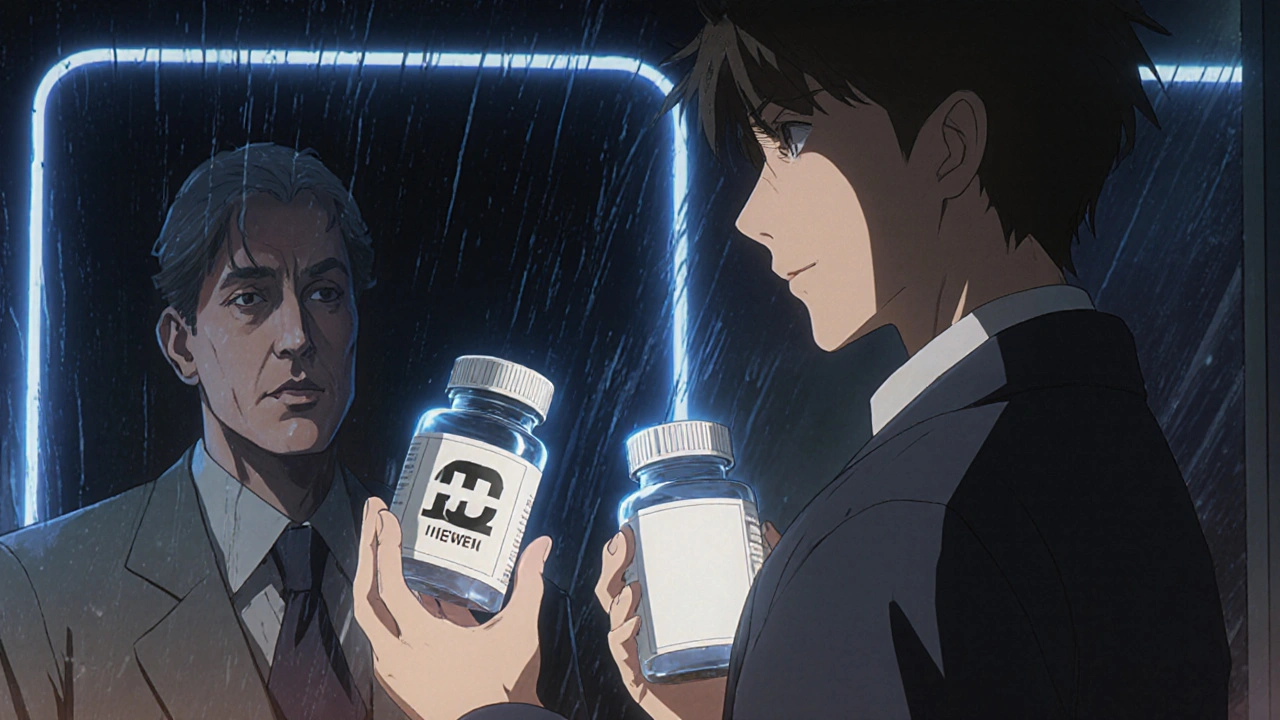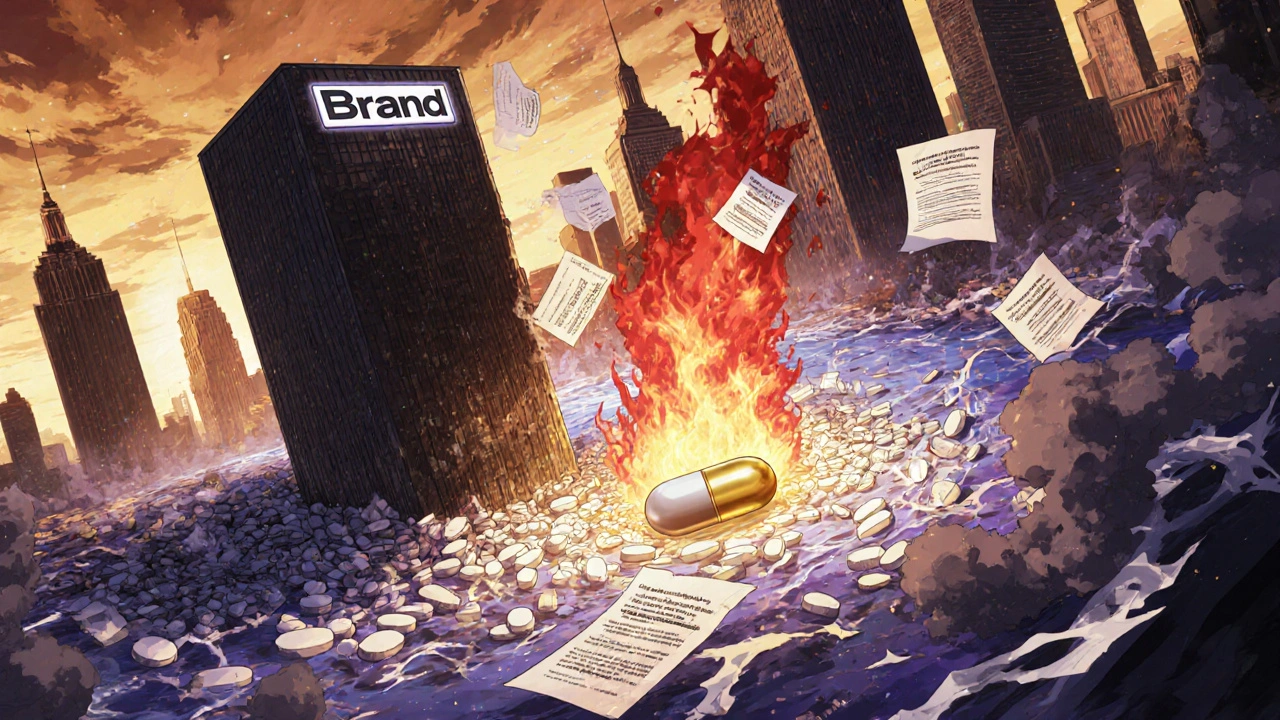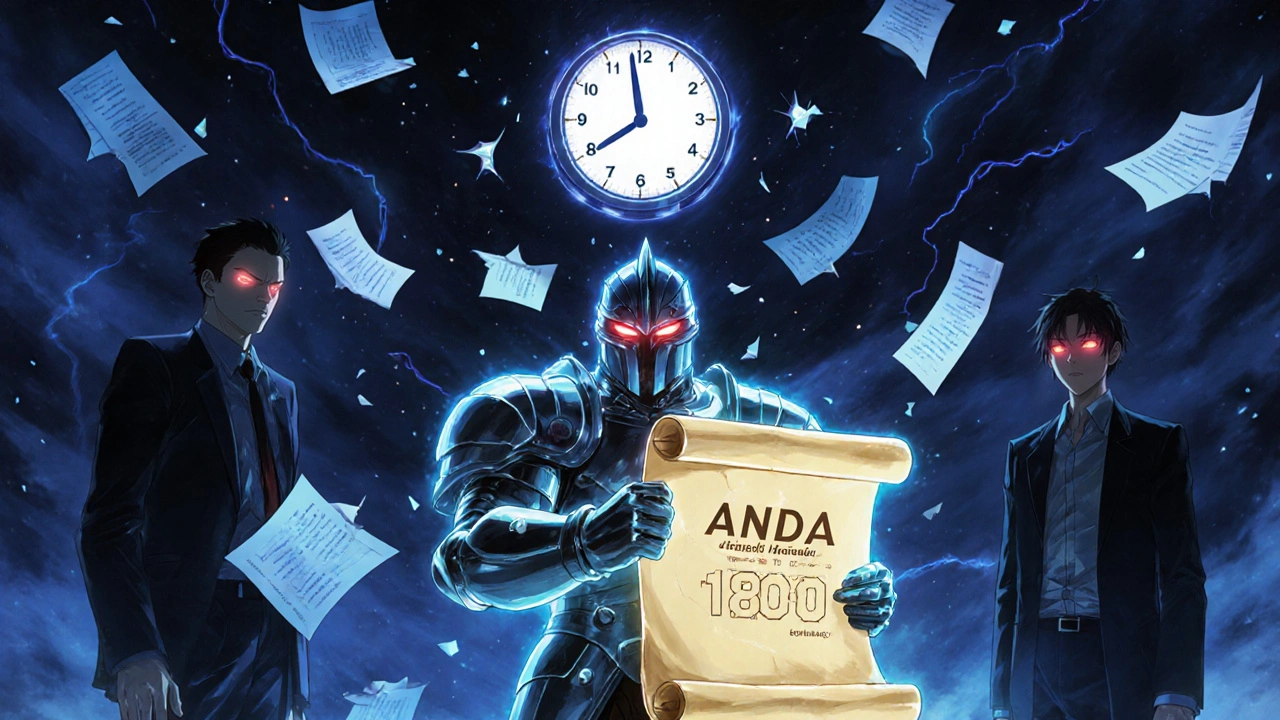How Brand Manufacturers Produce Their Own Generic Versions

When a popular brand-name drug loses its patent, prices usually drop fast. Patients expect cheaper alternatives. But here’s the twist: sometimes, the same company that made the brand-name drug also starts selling the generic version. It’s the same pill, same factory, same ingredients - just a different label. This isn’t a loophole. It’s a calculated move called authorized generics.
What Exactly Is an Authorized Generic?
An authorized generic is not made by a rival company. It’s produced by the original brand manufacturer, using the exact same formula, equipment, and quality controls as the branded version. The only differences? The packaging and the name. No active ingredients change. No manufacturing process shifts. Even the color, shape, and taste stay the same. The FDA confirms these are bioequivalent to the brand - 99.7% of the time, according to their own data.Think of it like a car company selling the same model under two names: one with a flashy logo and higher price, the other with plain branding and a lower sticker. The car is identical. The only thing that changes is who’s buying it and how much they pay.
Why Do Brand Companies Do This?
It’s not charity. It’s survival.When a patent expires, multiple generic makers jump in. Within a year, prices can crash by 80-85%. That’s devastating for a company that spent billions developing the drug. If they do nothing, they lose nearly all their revenue. But if they launch their own generic version, they keep a slice of the pie.
Take AstraZeneca in 1997. When Prilosec’s patent expired, they rolled out an authorized generic under a different label. Within six months, they captured 30% of the omeprazole market. That’s not just a backup plan - it’s a way to control the chaos.
By launching an authorized generic, companies avoid letting competitors steal their customer base. They keep their production lines running. They maintain quality control. And they keep some pricing power. Instead of letting a dozen generic makers undercut each other, they set the floor price.
How Is It Made? The Production Process
There’s no need to rebuild the factory. No new clinical trials. No waiting years for FDA approval.Brand manufacturers already have everything they need: the drug formula, the manufacturing license, the GMP-certified facility. All they have to do is file a simple Abbreviated New Drug Application (ANDA) - the same form used by generic companies - but they already have the data. The FDA fast-tracks it because they’ve seen it all before.
Transitioning from brand to authorized generic takes 6-9 months. Compare that to the 17-month average wait for a traditional generic applicant. That’s a huge advantage. While other companies are still waiting for inspections, the brand manufacturer is already shipping boxes.
They also skip the 180-day exclusivity period granted to the first generic company to challenge a patent. That means they can enter the market on day one - right when the patent expires. Teva did this with Copaxone in 2019. On the exact day the patent ended, their authorized generic hit shelves. They captured 22% of the market in the first quarter.

How Much Do They Cost? The Pricing Game
Authorized generics aren’t the cheapest option. But they’re not the brand price either.Typically, they’re priced 10-15% below the brand name, but 5-10% above other generics. Why? To create a middle tier. Patients who want the same pill they’ve been taking - but don’t want to pay full price - choose the authorized generic. Those who want the absolute lowest cost go for the traditional generic.
Eli Lilly’s Cialis authorized generic, launched in 2018, kept 78% of the drug’s total revenue despite generic competition. That’s because many patients and pharmacies trusted the familiar product. Even though a $30 generic was available, the $85 authorized version still sold well.
But here’s the catch: patients often don’t know it’s the same company. A 2023 Kaiser Family Foundation survey found 64% of patients didn’t realize the "generic" they were given was made by the brand manufacturer. That confusion helps sales - but it also frustrates some.
Controversy and Criticism
This strategy isn’t popular with everyone.The Federal Trade Commission (FTC) has accused companies of using authorized generics to delay real competition. In 2017, Actavis settled a $448 million case for using an authorized generic to block a rival’s entry into the Namenda market. The FTC argues this isn’t competition - it’s market manipulation.
Dr. Aaron Kesselheim from Harvard says authorized generics give patients the illusion of choice without real savings. His 2022 study showed markets with authorized generics saw only a 32% price drop. In markets with only traditional generics, prices fell 68%.
Independent pharmacies report patient confusion. One pharmacist told the National Community Pharmacists Association: "I had a guy come in asking why his insurance wouldn’t cover the generic. I told him it was the same pill. He said, ‘Then why’s it so expensive?’"
On Reddit, users call it "the brand’s way of keeping the money." One user wrote: "I’m paying $85 for a pill that’s literally the same as the $30 one. That’s not a generic - that’s a scam."

What Do Patients Think?
Despite the criticism, patients often prefer authorized generics - if they know what they are.On Drugs.com, authorized generics average 4.2 out of 5 stars. Traditional generics get 3.8. Why? Comments like: "I’ve been on this for 10 years. This is exactly the same. No side effects changed."
Patients value consistency. They don’t want to switch to a new pill that might feel different, even if it’s chemically identical. The FDA says generics must be bioequivalent, but people still worry. An authorized generic removes that fear.
And that’s exactly why manufacturers do it. It’s not just about profit. It’s about trust. They know patients won’t switch unless they’re sure it’s safe. So they give them the same thing - just cheaper.
The Bigger Picture: Why This Is Growing
More than $250 billion in brand-name drug sales are set to lose patent protection between 2023 and 2027. That’s a tidal wave of expirations.Companies like Pfizer, Johnson & Johnson, Roche, Merck, and AbbVie have already launched 47 authorized generics between 2020 and 2023. That number is rising 28% every year.
Why now? Because generics are getting harder to make. Biologics - complex drugs like Humira or Enbrel - are expensive to copy. Even traditional generics are facing supply chain issues. So brand manufacturers are stepping in with what they know best: their own production.
In 2023, Johnson & Johnson launched the first authorized generic for a long-acting injectable drug: Invega Sustenna. That’s a big deal. These aren’t pills you swallow. They’re injections given monthly. Making them requires precision. Only the original maker has the expertise.
And now, the first authorized biosimilar - Amgen’s version of its own Enbrel - was approved in 2023. This could be the next frontier. If a company can make its own biosimilar, they’ll own both the brand and the "generic" version. That’s a monopoly in disguise.
What’s Next?
Analysts predict that by 2025, 40% of small-molecule drugs losing patents will get an authorized generic from the brand maker. That’s up from 18% in 2022.Companies are getting smarter. Some, like Novartis, are planning "dual launches" - where they start marketing the brand as a "transition product" before the patent even expires. They’re not waiting for the cliff. They’re building the ladder.
But regulators are watching. The CREATES Act of 2019 tried to stop companies from blocking competitors from getting samples. But it didn’t touch authorized generics. That loophole remains wide open.
So here’s the reality: if you’re taking a brand-name drug that’s about to go generic, you might not get the cheapest version. You might get the same pill - just with a new label and a slightly lower price. And the company that made it will still be the one making the most money.
It’s not illegal. It’s not a scam. But it’s not exactly what most people think of when they hear "generic."
Are authorized generics the same as regular generics?
Yes and no. Authorized generics are chemically identical to the brand-name drug - same active ingredients, same manufacturing process, same quality controls. The only difference is the packaging and labeling. Regular generics are made by other companies and must prove bioequivalence to the brand, but they may use different fillers or manufacturing methods. Authorized generics are the exact same product, just sold under a different name.
Why is an authorized generic sometimes more expensive than a regular generic?
Because it’s not designed to be the cheapest option. Authorized generics are priced to compete with the brand, not the lowest generic. They’re usually 10-15% cheaper than the brand, but 5-10% more than other generics. Companies do this to preserve some revenue while still offering a lower-cost choice. Patients who want familiarity over savings often choose them.
Can I tell if a generic is an authorized generic?
Not always. The label won’t say "made by Pfizer" or "same as brand." But you can check the manufacturer name on the bottle. If it’s the same company as the brand (e.g., Eli Lilly for Cialis), it’s likely an authorized generic. Pharmacists can also tell you - many don’t know the difference themselves, so ask.
Do authorized generics help lower drug prices overall?
They do, but not as much as traditional generics. A 2022 Congressional Budget Office report found authorized generics reduce spending by $2.3 billion annually - but that’s only 37% of what could be saved if traditional generics dominated. The real price drops happen when multiple companies compete. Authorized generics limit that competition, so overall savings are lower.
Is it legal for a brand company to make its own generic?
Yes. It’s fully legal under the Hatch-Waxman Act of 1984, which created the modern generic drug system. The FDA allows it, and courts have upheld the practice. However, if a company uses an authorized generic to block competitors from entering the market - like by refusing to sell them samples - that can be illegal. The FTC has fined companies for that kind of anti-competitive behavior.
Why don’t more companies use authorized generics?
They do - and it’s growing fast. In fact, 68% of top 50 brand drugs that lost patents between 2018 and 2022 got an authorized generic. The reason more don’t use it? It requires planning years in advance, legal teams, marketing shifts, and regulatory filings. Smaller companies don’t have the resources. But the big players - Pfizer, J&J, Roche - are using it as standard practice.

Eleanora Keene
November 14, 2025 AT 23:23I’ve been on Prilosec for years and just found out my "generic" was made by AstraZeneca. Mind blown. I thought I was saving money, but honestly? I’m glad it’s the same pill. No weird side effects, no guesswork. Just cheaper. Why did no one tell me this before?
Joe Goodrow
November 16, 2025 AT 12:16This is corporate greed wrapped in a lab coat. American patients are getting played. They sell you the brand for $100, then slap a new label on the exact same pill and charge $85. Meanwhile, real generics from India or China cost $12. This isn’t innovation-it’s exploitation. Wake up, people.
Don Ablett
November 16, 2025 AT 21:54The regulatory framework under Hatch-Waxman permits this practice, and while legally unimpeachable, it raises significant questions regarding market dynamics and consumer perception. The absence of mandatory disclosure on packaging creates a structural asymmetry of information, which may constitute a form of passive deception. Furthermore, the speed of market entry via pre-existing ANDA data suggests a strategic advantage that undermines the intended competitive equilibrium of the generic drug market.
Kevin Wagner
November 18, 2025 AT 00:52Let me tell you something-this isn’t shady, it’s SMART. Companies didn’t spend billions研发 to watch their life’s work get crushed by cheap knockoffs. They’re giving you the SAME drug, safer, more reliable, and still cheaper than the brand. That’s not a scam, that’s a lifeline. Stop acting like every business move is a conspiracy. This is capitalism with a conscience. And yeah, I’ll take the $85 version that doesn’t give me stomach cramps like that sketchy $12 bottle from Walmart.
gent wood
November 18, 2025 AT 17:14I appreciate the depth of this analysis, and I think it’s important to recognize that while authorized generics do preserve some revenue for manufacturers, they also provide a bridge for patients who are anxious about switching. The psychological comfort of continuity cannot be overstated in chronic care. Many patients report better adherence with authorized generics, which ultimately reduces long-term healthcare costs. It’s not perfect, but it’s a pragmatic solution in a broken system.
Dilip Patel
November 20, 2025 AT 09:18USA and Canada think they own the pharma industry but India makes better generics for 1/10th the price and they dont play these mind games. Why do you pay 85 when you can get same pill from india for 5 dollars shipped to your door? You people are being fooled by big pharma propaganda. No wonder your healthcare costs are insane
Jane Johnson
November 20, 2025 AT 22:42It’s deceptive. Patients are being misled. The FDA doesn’t require disclosure. Pharmacies don’t tell you. Insurance doesn’t flag it. This is a loophole that exploits consumer trust. It should be illegal.
Peter Aultman
November 21, 2025 AT 01:35Yeah but honestly? I’d rather pay $85 for the pill I’ve been on for 12 years than risk some new generic that might make me feel weird. I don’t care who made it as long as it works. And if the company that made the original is the one making the "generic"? Cool. I’ll take it. No drama. No mystery. Just medicine.